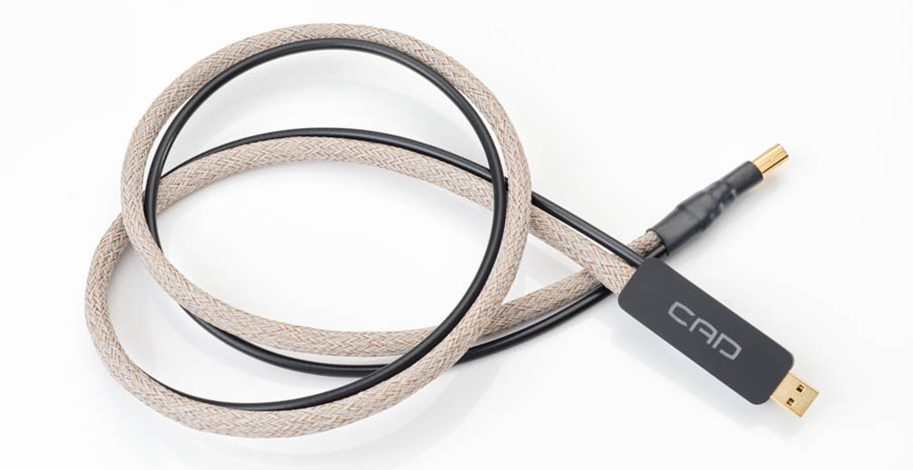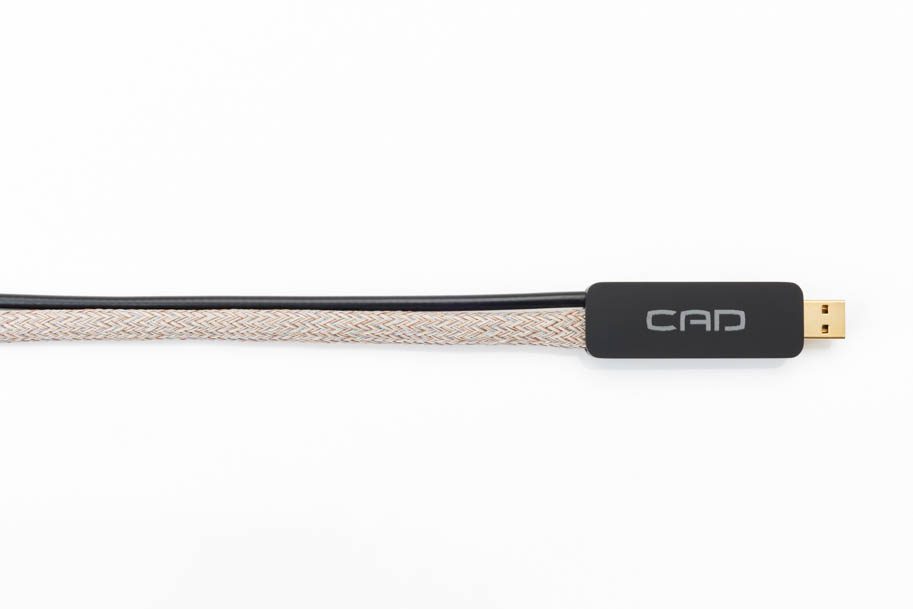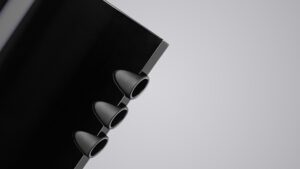
Esoteric cables tend to raise eyebrows outside the world of high-end audio. And when those cables are developments of familiar computer leads – as here, the humble USB cable – it’s easier to understand the scepticism. After all, computers demand the same bit-perfect fidelity of data as audio, lest the text document sent over a cable arrives with missing words or random spelling mistakes.
That’s the naïve way of viewing the value of specialised USB wiring anyway, here based on the faulty premise that digital audio sent over a USB cable is bit-perfect. Except, it’s not. Unlike the protocols used for transferring file system data, for example, the USB audio standard has no robust error checking and correction.
The USBasics
An identical USB cable can serve to connect your scanner, hard drive, mouse or DAC; but quite different comms protocols are used by different devices. And, in the case of audio, there is no guarantee of perfect transmission of the bits. If your text document was somehow converted to digital audio and sent over a USB cable, by the time the sound is translated back into text it is quite possible we’d see a page hiding several typos.
So now we have an argument for a certain level of quality in our USB cable. However, the principal difference between the cable that came free with your printer and its expensive audio counterpart may be just gold-plated plugs and a reassurance that only the finest components have been used. USB cables made for audio may be marketed as being built to exacting standards, but they rarely step outside of industry specifications.
There has been one USB audio cable though that challenged the state of the art, applying sound electrical engineering to make a demonstrably better connection for audio than a simple standards-compliant USB 2.0 wire.
Computer Audio Design showed it could build a better mousetrap when the CAD USB audio cable was first previewed some 10 years ago. Originally known as the Revelation, the ground-breaking design was updated in 2018 with two variants known simply as USB I and USB II. These were closely related, with the latter literally adding a twist to its wiring topology, along with three shapely bulges down the cable length packed with compounds to address microphony and reduce RFI.
The CAD USB cable earned awards for its, well, revelatory ability to maintain musical clarity. Now the design has been subtly tweaked, outwardly at least, with a return to a single high-performance cable that strives to improve on previous models. It’s been designated the USB II-R.
Meanwhile the place of an entry-level cable has been taken by a different approach – a plug-in USB adaptor that can be used with any existing cable. It’s called the USB Filter, costs £750, and will be the subject of a later review.
Patently clear
Before we look at the new cable it would be useful to recap what sets the CAD USB cable apart. Universal Serial Bus was devised by Intel in the late ’90s as a user-friendly replacement for the serial and parallel ports on PCs. Most audio applications still use USB 2.0 and its plentiful 480 Mb/s specification. The plugs, sockets and cables accommodate a four-wire connection – two for differential signal data, and two to optionally power 5 V peripherals from the host.

CAD designer Scott Berry’s aim was to provide an improved differential signal data cable by addressing voltage noise in the system, focusing on reducing unwanted RF noise from being inadvertently passed from source (PC) to DAC by the conductive USB cable.
The nitty-gritty of how this is achieved is not discussed by CAD in its marketing – and it’s likely many music lovers would not understand or care either. But in contrast to the brands that only make unsubstantiated or pseudoscientific claims for their products, the principles behind the CAD USB cable have been peer-reviewed by other engineers, leading to a GB patent award.
However, while the published patent presents an outline of the invention, specifics remain uncertain, as CAD understandably declines to detail the final product’s construction. When it comes to commercial rip-offs, the law may be on the side of a patent holder but defending it can be a costly process.
A summary of the patented invention follows, parts of which are only assumed to be included in the latest II-R cable. Four main aspects differ from a conventional cable. The +5 V wire, not even required by most hi-fi DACs, is literally distanced from the data lines by running external to the main trunk. The power ground line is RF filtered through a series inductor and/or resistor. One end of the outer screen is left unterminated. And the critical signal lines pass through a common-mode noise rejection choke. Hinting at the amount of R&D the design must have undergone, the chosen choke takes a non-obvious value for its characteristic impedance.

In the case of every CAD USB so far, the filter components seem to be housed in the fat Type A plug at the PC end. Earlier versions were hand-made by Scott and had the plug set in resin, likely over a tiny PCB, then covered in shrink-wrap. The II-R cable is now produced with a manufacturing partner and has a sleeker design that sandwiches the plug between two plates of black acrylic.
Sound quality
The difference between the old CAD cable and just about any other USB cable must be heard to be believed. Maybe there already is another contender for best USB audio cable in the world? It’s a subjective call, but I’ve heard examples up to and beyond £5000, and they can’t hold a light to it. Which left me wondering, upon hearing of an impending update, where to go from here?
To find out, I made a quick comparison of the II-R with the USB I and made an initial judgement – it is better, but how exactly? It took more time to answer that, and it necessitated a return to a non-CAD cable to set a baseline. Going back to the proverbial printer cable, along with some audiophile USB examples, showed the gulf that the first CAD cable opened.
The popular orchestral favourite of Holst’s ‘Mars’ showed the difference. Using an Apple Mac mini and Audirvãna Plus 3.2, with modified OS to allow kernel streaming, the sound with a regular USB cable to Chord Hugo TT2 DAC is flat and uninspiring. Brass and string sections are fighting each other, and both sides are losing. Most of the orchestra is jumbled together spatially and all lie in the same depth plane. In one word, it’s messy; musically unrewarding and almost a relief to get to the end.
The original CAD USB cable brings a transformation into something a vinyl listener would understand. Atmosphere and intrigue are introduced, and the piece’s drama becomes palpable. Stepping up to USB I, details are added – the tympani mallet strikes that vary the timbre of the drums, the way the Chinese gong swells and ebbs behind the orchestra. And in the case of the 1966 vintage recording here with Adrian Boult and the New Philharmonia, some dynamic recording tricks become all too obvious, the limiter or compressors that periodically cut in to keep the full orchestral envelope inside the window of the day’s tape machines.
CAD USB II brings a slight lift again, with a tighter soundstage showcasing more precise instrument placement, like the ratatat snare marking the 5/4 rhythm. USB I is in no way bright or glary, but II is faintly smoother, darker and more damped.
Which brings us to the CAD USB II-R. This is easily the most ‘analogue’ sounding of them all, erasing the tiniest hints of what we think of as ‘digital’. You can hear the minute shifts in timing between players, where Boult appears to have relaxed his grip deliberately or otherwise between orchestra sections. With the II-R in place I felt like I was hearing the Boult version anew, and with it the work as a whole. What impressed most was perhaps how this familiar piece still has the capacity to create menace and inspire awe, when reperformed in the context of a well-fettled digital system.
Pays dividends
So, the main dividend of using the CAD cable is to sever most of the hallmark vices of digital audio, and in particular computer audio where RF hash can so easily ride roughshod through the system. Assuming that the main issue is RF noise superimposed on the signal electronics, it really would appear to be performing as a most effective firebreak.
And specifically, the USB II-R is now the cable that can preserve the most authentic account of the music so far, acting almost like an analogue conduit from PC to DAC. Against any known contender, this winner takes them all.
Price and contact details
- Type USB 2.0 cable, Type A to Type B connectors
- Price £1,500/1.1m length
Manufacturer
Computer Audio Design
+44(0)2033 970 334
By Andrew 'Harry' Harrison
More articles from this authorRead Next From Review
See all
PrimaLuna EVO 100 phono preamplifier
- Apr 22, 2024

Reiki Audio SuperSwitch Master Pro + Servant Pro
- Mar 27, 2024

Melco Audio N1-S38 music server
- Mar 27, 2024











